Growing and Background
The fuzzy leaves of these plants have a rounded shape, which led to the genus name Myosotis, translated as “mouse ear.” There are approximately 100 species in the genus, and most of them are popularly called forget-me-not or scorpion grass.
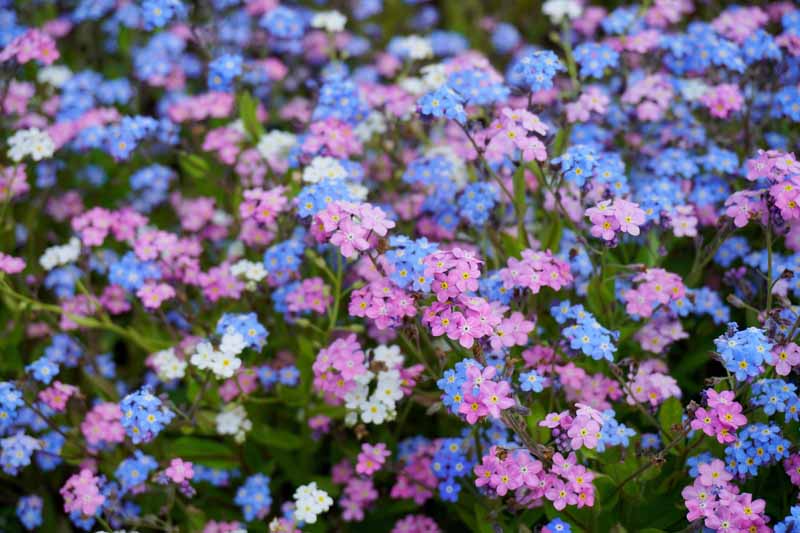
This particular type of plant is typically found in temperate regions, though some species can be found in alpine areas. The majority of these plants are native to western Eurasia and New Zealand, with only a small number growing naturally in North America, South America, Africa, New Guinea, and Australia. Despite being a favorite of French and German gardeners for many years, it wasn’t until the 1800s that this plant gained popularity in British gardens. Out of the 100 different species of this plant, three are commonly grown in gardens. One of these species is Myosotis sylvatica, which is also known as woodland forget-me-not. It’s a biennial plant that can be found growing natively in Europe, as well as parts of South Asia such as Bhutan, India, and Nepal.

This particular plant species can be found growing in various environments such as woodlands, forests, and rocky terrains. The focus of our guide is mainly on the commonly cultivated variety, although other similar species share the same growing requirements. Unfortunately, this plant has a tendency to overgrow and take up space where native plants should thrive. This becomes a major issue when it escapes cultivation and invades non-native areas such as North America and Australia. Along with the true or water forget-me-not, which is also known as M. scorpioides, it is classified as an invasive and noxious weed in some midwestern states. However, there is one species that stands out as the state flower of Alaska. The alpine forget-me-not, also known as M. asiatica, is a biennial plant that blooms in the summer and is native to the northwestern regions of the US and Canada. It is a stunning rock garden plant that serves as an excellent alternative if the other two aforementioned species are considered invasive in your area.
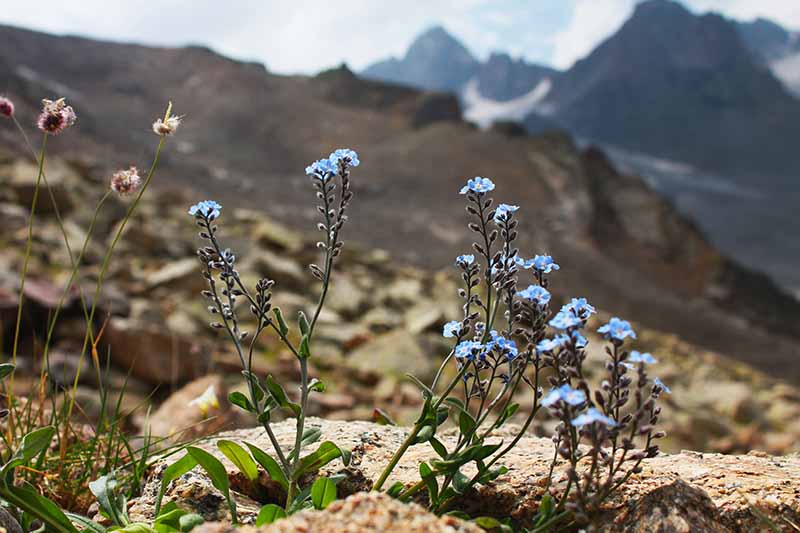
The meaning behind forget-me-not flowers goes beyond their aesthetic appeal. These flowers have a sentimental name that is steeped in legend. The story goes that a knight who was drowning threw a bouquet of the blue blooms to his beloved standing on the banks, crying out “forget me not!” Ever since then, the flowers have been associated with remembrance. King Henry IV adopted the clear sky-colored petals as his emblem during his exile, and they remained a symbol of royalty upon his return. In Newfoundland and Labrador, forget-me-nots are the equivalent of poppies. Every year on July 1st, residents wear these flowers to commemorate the death of hundreds of soldiers in France in 1916. Whether you admire forget-me-nots for their beauty or their significance, these flowers are truly unforgettable.

One of the meanings behind the forget-me-not flower is its association with the Armenian Genocide. In the US, November 10 is recognized as National Forget-Me-Not Day since 1921 and was created to raise funds for injured soldiers returning from World War I. New Zealand also celebrates Forget-Me-Not Days on June 5 and 6 to raise awareness and funds for Alzheimer’s disease. Myositis plants, commonly known as forget-me-nots, are easy to propagate through seeds or division. They are biennial and self-seed easily, making it effortless to keep your garden full of these flowers. M. sylvatica tends to set seed during the summer and will persist for years in your garden if you don’t deadhead them. You can gather your seeds or buy them from a local nursery or online. To grow your own forget-me-nots, you can direct sow the seeds onto lightly watered and prepped soil in midsummer, or start the seeds indoors eight to ten weeks before the last frost in small pots filled with moistened soilless medium. Keep the pots in a dark location around 64-68°F, water them from below, and wait for the seeds to germinate within two to three weeks.
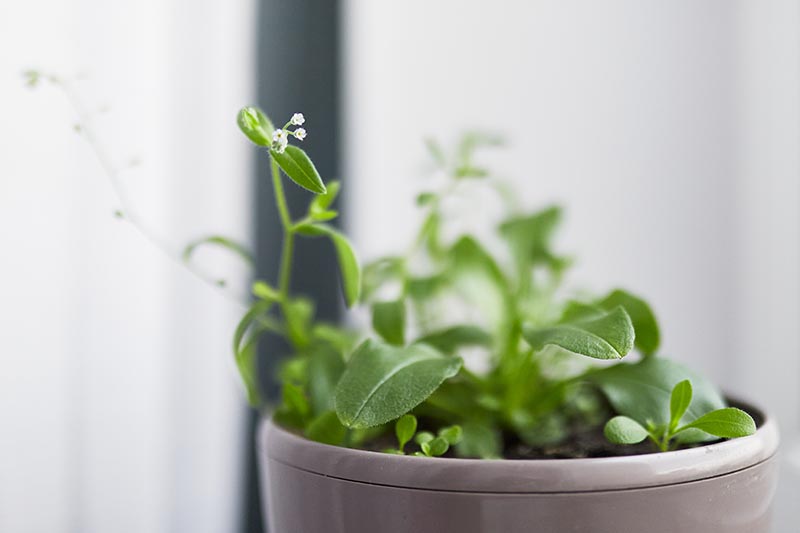
When your seedlings have two sets of true leaves, you can begin hardening them off. You have the option to transplant them immediately or wait until autumn to do so. If you transplant in the spring, your plants should bloom the same year, but if you wait until autumn, they won’t produce flowers until the following spring. Although most forget-me-nots only live as biennials, some may survive longer as short-lived perennials depending on the growing conditions and variety. Every three to five years, divide surviving forget-me-nots in the spring after flowering or during early fall by carefully digging up the root ball and dividing it by hand. When replanting, choose a spot that is well-draining and moist, and water potted plants thoroughly before transplanting. Dig a hole slightly bigger than the root ball, insert the plant, and backfill. Avoid piling the soil too high or touching the base of the stem. Water the plant in after planting. Forget-me-nots grow best in zones 3-8 and can tolerate drought, but may go dormant during the hottest part of summer once seed has been set. Plant them in full sun or partial shade and provide shade during the day in areas with hot summers.
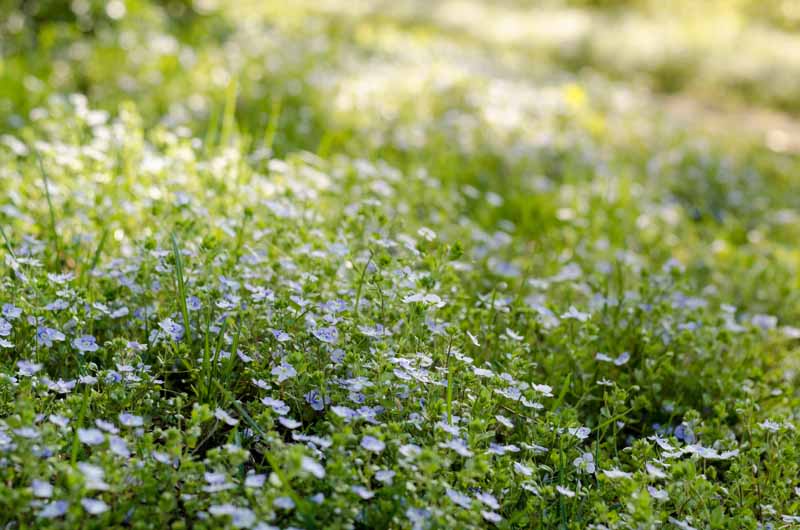
The woodland forget-me-not is a versatile plant that can thrive in different types of soil, such as sandy, loamy, or clay. As long as the soil can drain well and you keep it moist, it can handle a pH level ranging from slightly acidic to slightly alkaline, which is between 6.0 and 8.0. Make sure to monitor the moisture level of the soil regularly and water it when it’s dry up to two inches deep. If the leaves turn yellow, fertilize your plant with a 5-10-10 NPK ratio fertilizer or similar once a month in spring and summer, following the instructions on the package. When the plant is finished blooming, deadhead or remove it entirely to prevent self-seeding if desired.
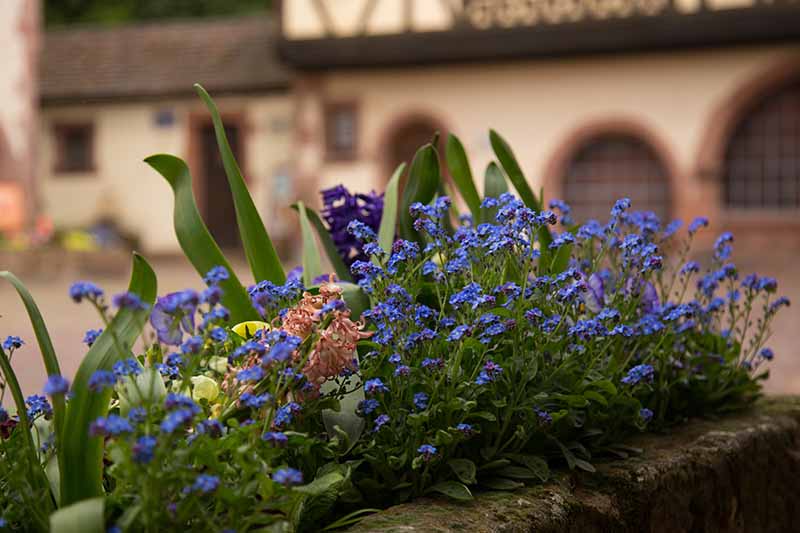
You can grow forget-me-nots in containers with ease. Just make sure to use well-draining soil and a container with proper drainage. Keep a closer eye on the soil moisture since containers tend to dry out quickly. Fertilize the same way as you would if planted in the ground and provide some shade during the day. For hot areas, plant them in full sun but give partial shade. It’s important to maintain moist, well-draining soil and fertilize monthly with 5-10-10 (NPK). While forget-me-nots don’t require pruning per se, you’ll need to perform a little maintenance annually to prevent them from spreading too much.
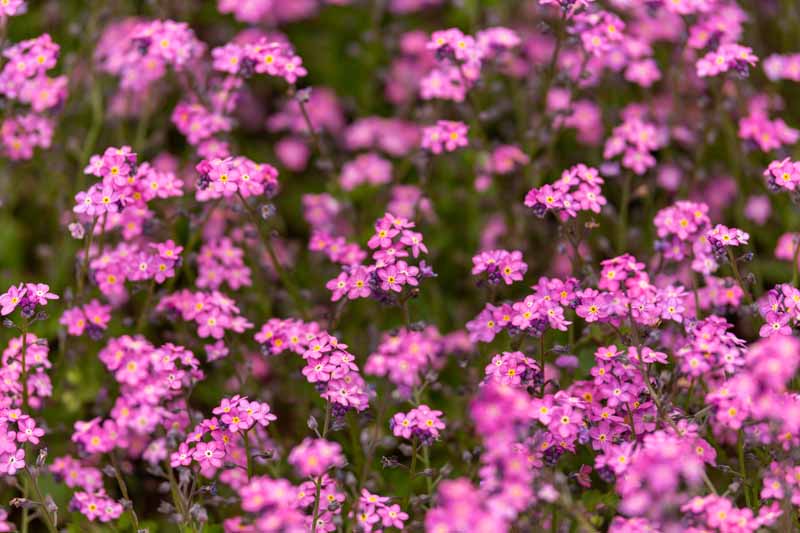
If you want to prevent forget-me-nots from spreading in unwanted areas the following year, make sure to remove the dead blooms before they produce seeds. Additionally, you can relocate some of the volunteers to other parts of your garden. For older plants that survive past their second year, it’s a good idea to divide them to maintain their health and allow them to expand. When you think of forget-me-nots, you probably picture their striking blue color. While this is true for M. sylvatica, there are also pink and white varieties that you can choose from.
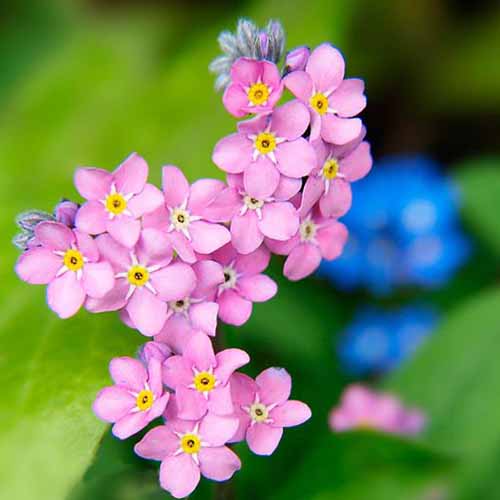
At Eden Brothers Nursery, you can find a variety of rose, indigo, white, and dwarf ultramarine M. sylvatica seeds to enhance the beauty of your garden. If you’re having a tough time deciding on a color, why not try a mixed collection of pink, blue, and white? These collections are available in small packets or in bulk. One of the highlights of the Sylva series is the ‘Bluesylva’, which is a low spreading biennial cultivar with bright blue flowers that have a yellow eye. Another popular option is the bright white, yellow-eyed flower of the Sylva series that blooms from early spring to late summer. For those who prefer a more traditional look, ‘Victoria Blue’ is a great option with its compact plant and petite, dazzling flowers that resemble the sky.
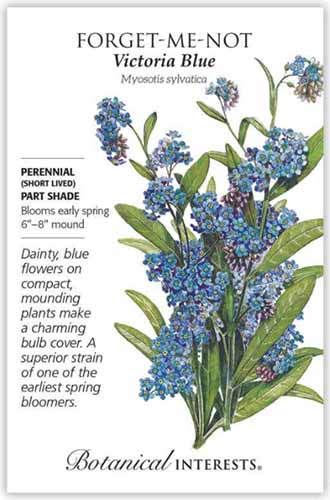
Introducing the charming ‘Victoria Blue’, now conveniently available in 250-milligram seed packets from Botanical Interests. This delightful plant boasts a compact size and is adorned with an abundance of small pink flowers, each featuring a charming white center. ‘Victoria Blue’ is also an early bloomer, making it the perfect addition to any garden looking for a splash of color in the springtime.
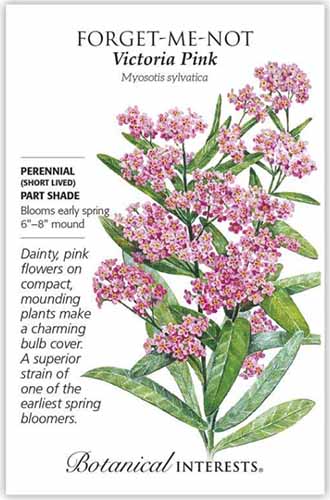
Botanical Interests offers 250-milligram packets of ‘Victoria Pink’ seeds. Although forget-me-nots are not commonly affected by insects, there are several diseases to watch out for. Aphids are known to target Myosotis plants, which can be identified by white skins or curled leaves. To address this issue, refer to a guide on how to deal with aphids. Fungal pathogens that thrive in moist and humid conditions cause most of the diseases that impact M. sylvatica. Crown rot, caused by Sclerotium delphinii fungi, affects the stem’s lower part near and in the soil, and is spread through splashing water and tools. To prevent this disease, grow your plants in well-draining soil, water only when necessary, and ensure the soil surface doesn’t touch or pile up against the plant stem. Powdery mildew, caused by Golovinomyces cynoglossi, thrives in high humidity and causes fluffy white growth on leaf surfaces. To avoid this disease, provide enough space between plants and remove individual leaves showing white fuzzy spots before it spreads. If severely infected, get rid of the entire plant. To treat powdery mildew, use organic products such as ZeroTol from Arbico Organics.
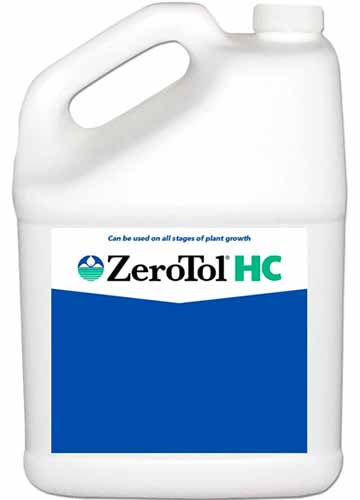
Introducing ZeroTol Fungicide, a powerful solution that acts as both a fungicide and bactericide, perfect for use by homeowners and commercial growers alike. This product is made of hydrogen peroxide and peroxyacetic acid, ensuring its safety and effectiveness. Always remember to follow the instructions on the label when using this product. In case of powdery mildew, you may also want to check out some of the best organic remedies available. Look out for rust-colored spores caused by various species of Puccinia fungi, which can appear on leaves or stems, surrounded by yellow tissue. If you’re growing an annual or biennial plant, it may be best to remove it, but if it’s a perennial, consider using a copper or sulfur-based fungicide as soon as you notice symptoms.
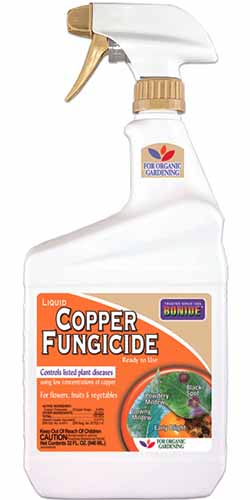
Discover the potential treatment solution offered by Bonide’s Liquid Copper Fungicide, now available for purchase at Arbico Organics. This product can assist in creating a charming border of blue around tulips, roses, or shrubs, or even an entire bed of forget-me-nots that will be sure to attract bees, butterflies, and admirers alike.

The exquisite forget-me-nots are a stunning option for ground cover on slopes and banks and can also thrive in gardens or containers on patios. These herbaceous biennials have beautiful blue, pink, or white flowers along with green foliage and originate from Eurasia. They require medium watering and can tolerate deer, drought, and rabbits. Forget-me-nots prefer full sun to part shade and grow best in sandy, loamy, or clay soil with a pH between 6.0-8.0 and good drainage. They can reach a height of 6-12 inches and spread 6-9 inches, making them ideal for beds, borders, and containers. The Boraginaceae family plant has a moderate growth rate and belongs to the Myosotis genus, species Sylvatica. While aphids and crown rot, powdery mildew, and rust can affect this delightful plant, it remains an enduring garden favorite that captivates with its bright blue flowers and easy-to-grow nature.
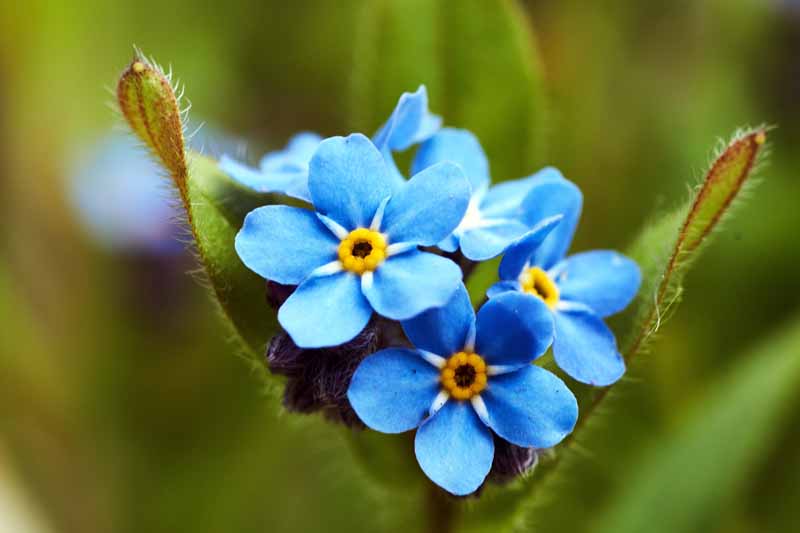
The forget-me-not is a stunning flower that comes in various shades such as pink, white and others. Interestingly, the flower got its name from a knight who is believed to have named it as such before he tragically died. As a result, this flower has become a symbol of remembrance across the world. If you live in an area where this flower is celebrated for any special occasion, we would love to hear about your experiences with it, so please share with us in the comments. Additionally, if you happen to love forget-me-nots, you should check out other plants within the Boraginaceae family, which are great at attracting pollinators. Personally, I am quite fond of borage, as it is a favorite among honey bees.





